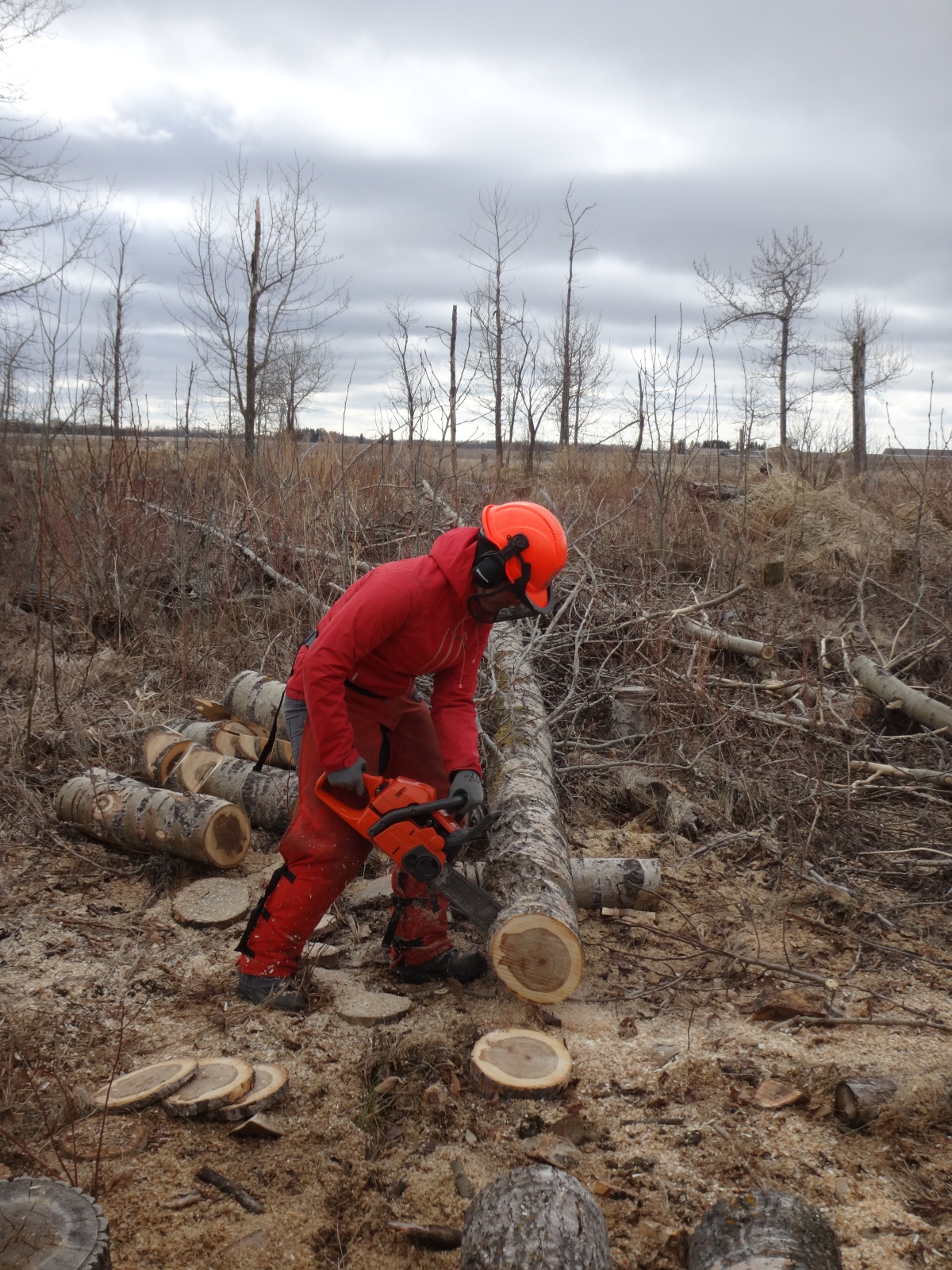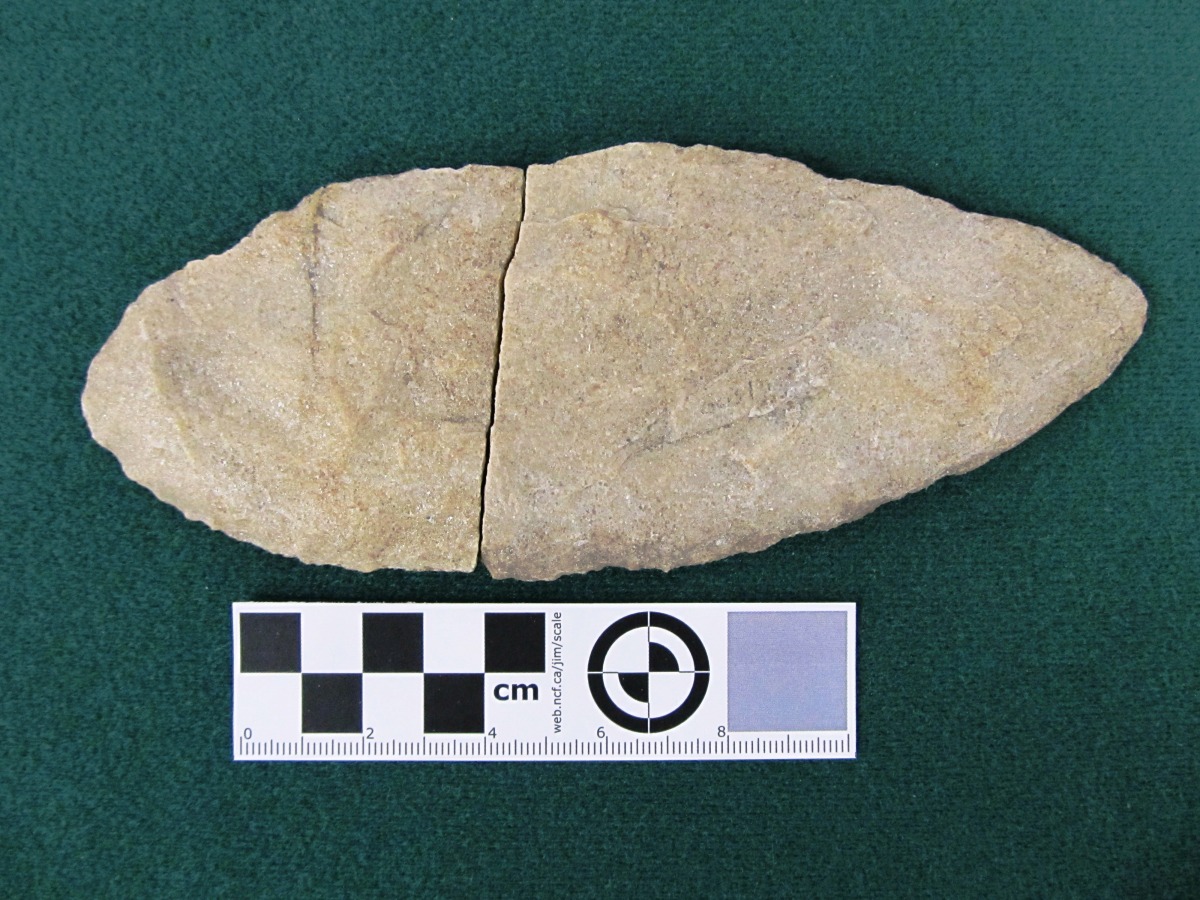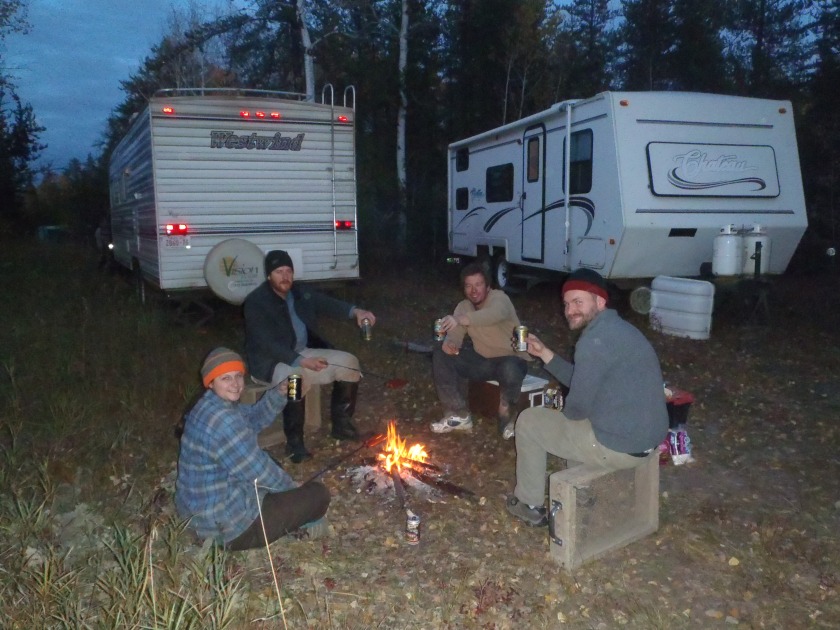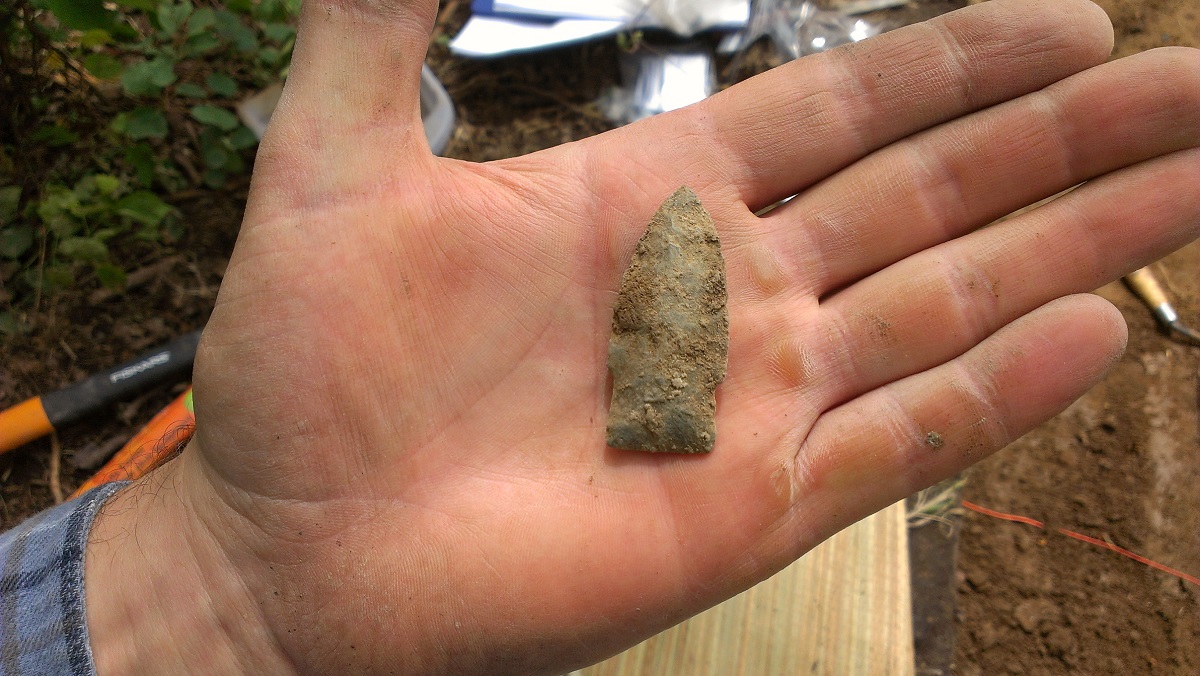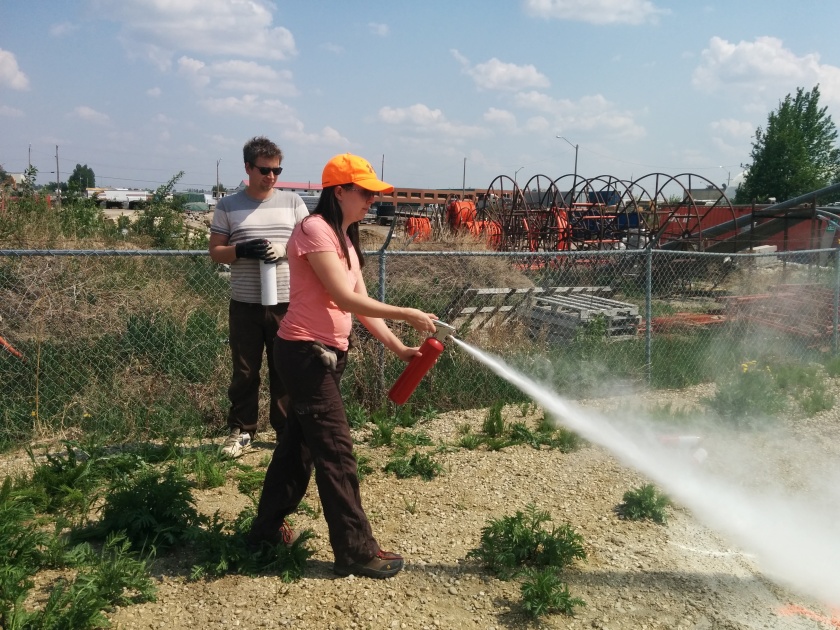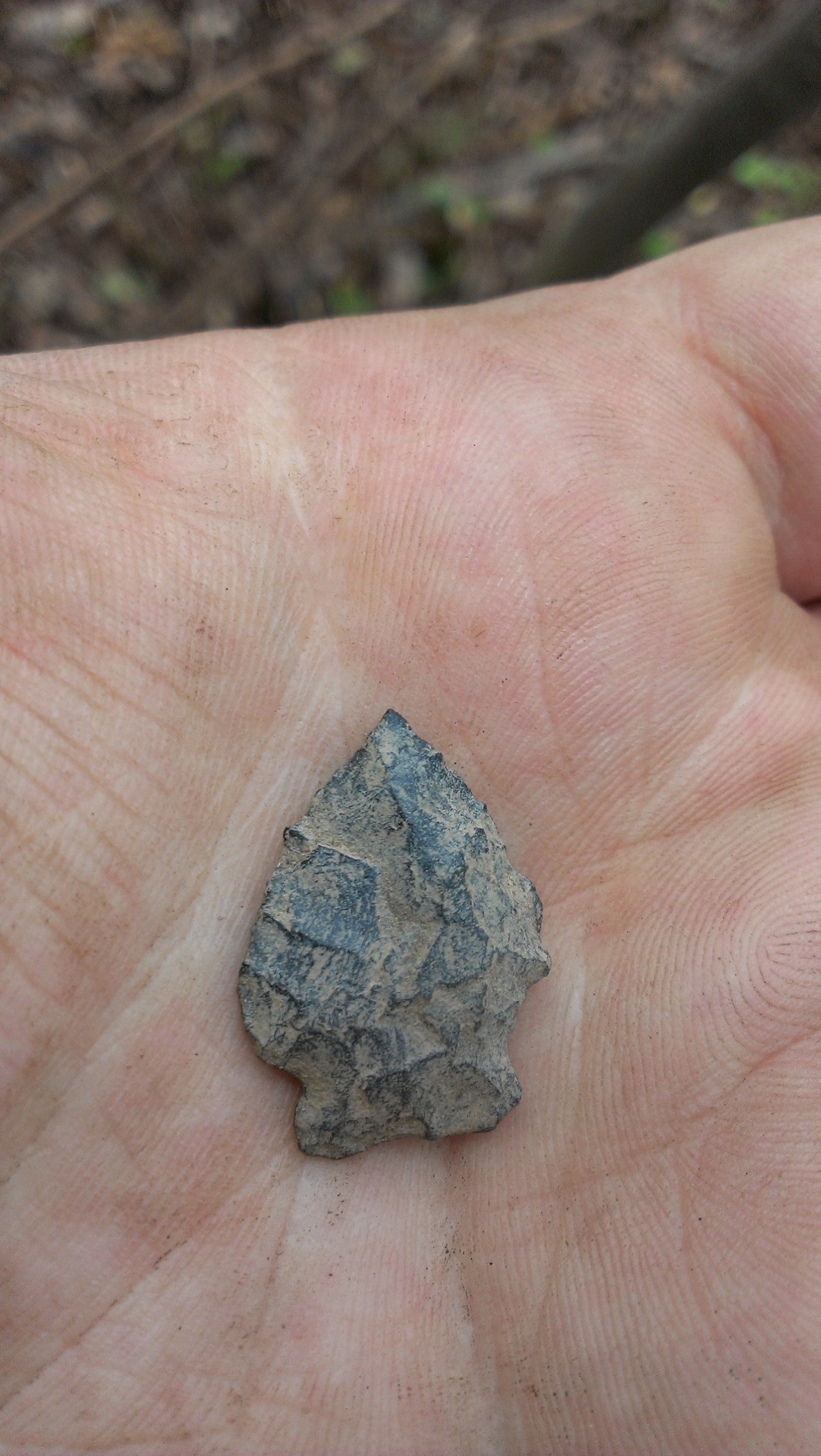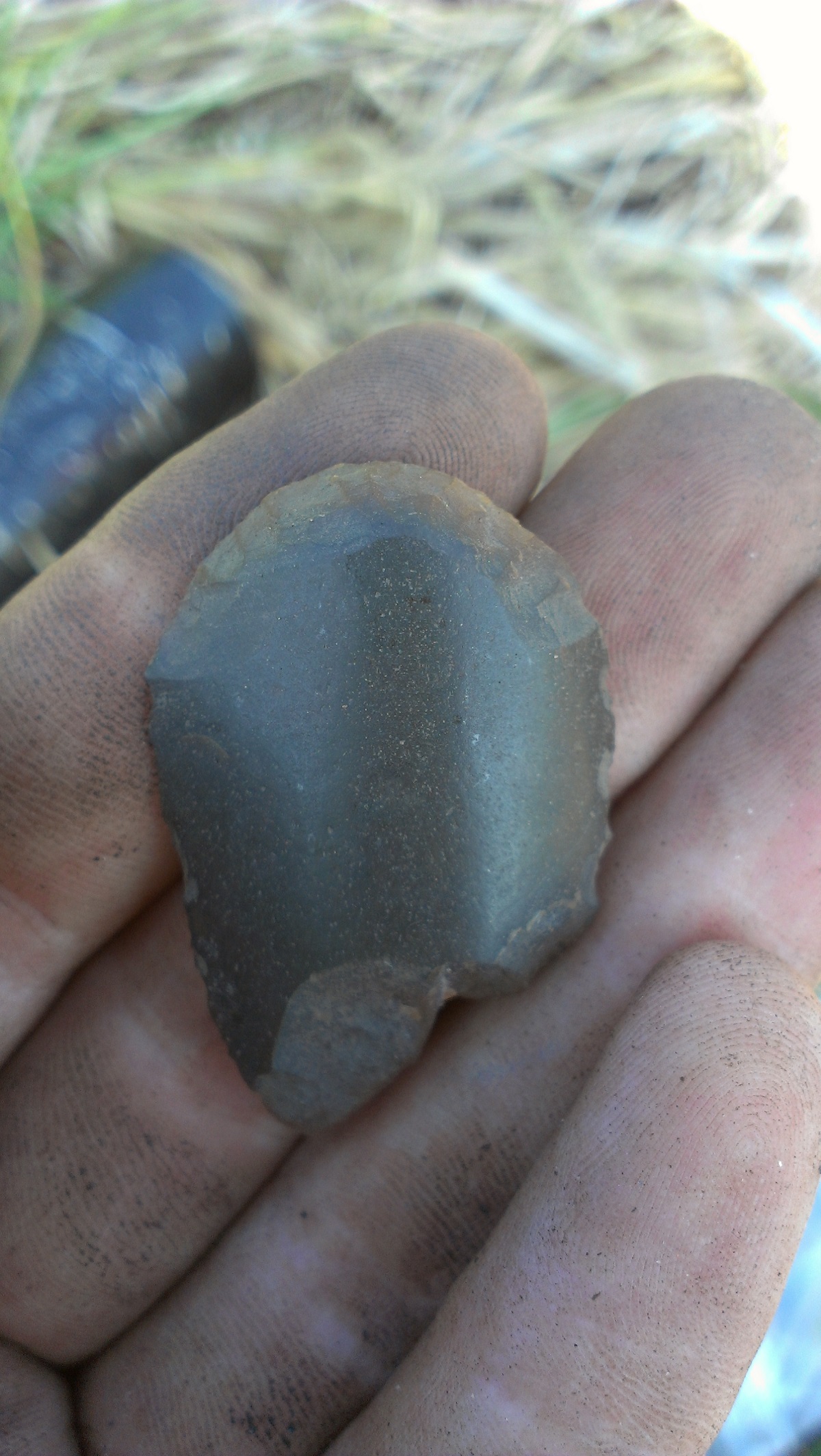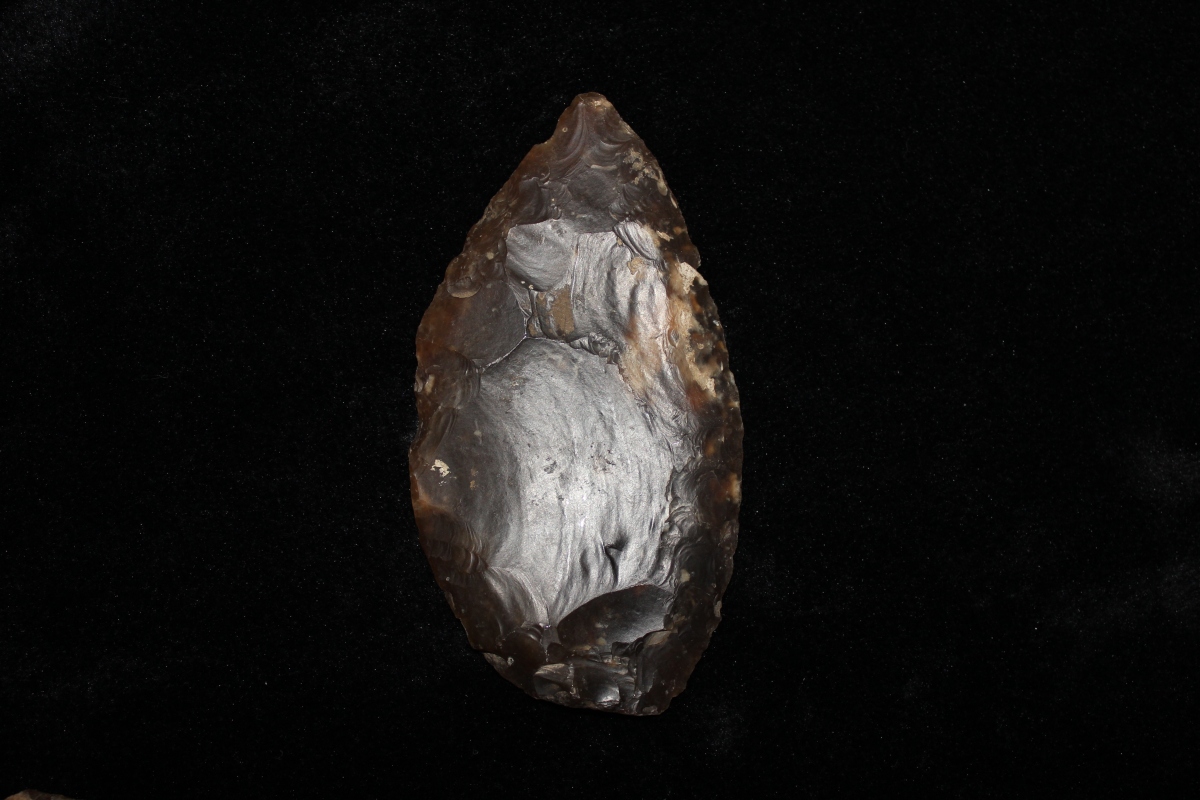A lot of our work is located very far back in the boreal forest. It is not uncommon to have the only trail that gets close to our target areas be blocked by a fallen log. During hunting season, hunters usually clear these trails. But the rest of the summer it is up to us. Several of our crew members participated in a Chainsaw training course. We learned to how to properly maintain our equipment and how to safely operate the chainsaw. We had the opportunity to practice our skills by making small chairs from the logs.
There is a lot of PPE involved! We are sporting the stylish chaps, the fancy face cage, and the comfy ear muffs. We also need to be mindful of where our legs are so that we don’t accidentally get them in the way!

